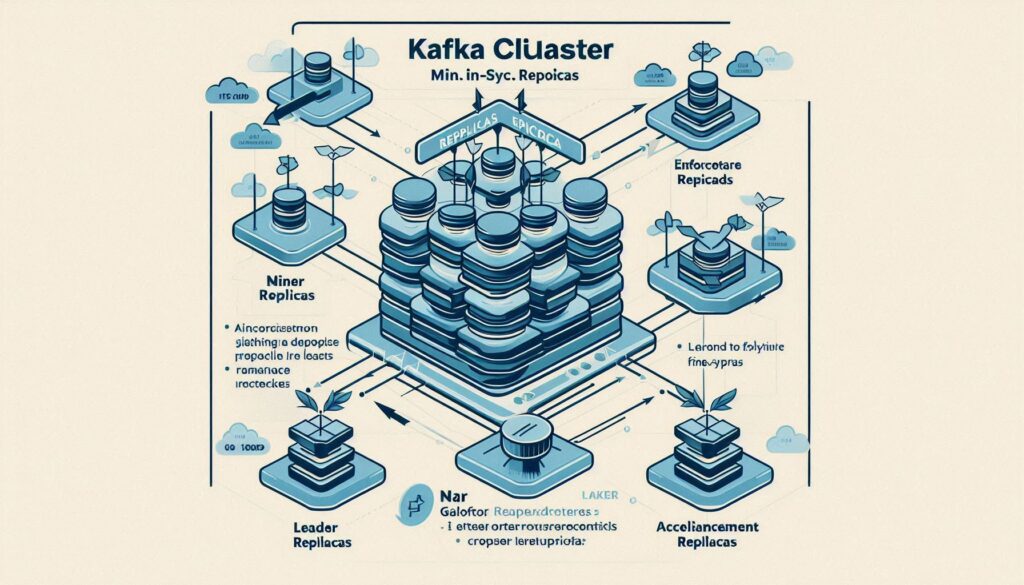In Apache Kafka, the role of cluster metadata management has evolved significantly. Initially, Kafka relied on Zookeeper, a distributed coordination service. However, Kafka Raft (kRaft), introduced in version 2.8, offers an alternative built directly into Kafka.
This article compares Zookeeper vs kRaft, highlighting their differences, features, and implications for Kafka users. By understanding the transition from Zookeeper to kRaft, you can make informed decisions about adopting the newer architecture.
TL;DR
Zookeeper and kRaft manage metadata and cluster coordination in Kafka. Zookeeper provides a stable and reliable service, while kRaft eliminates external dependencies by embedding metadata management directly in Kafka brokers.
What Is Zookeeper in Kafka?
Zookeeper is an open-source distributed coordination service that Kafka has historically used for managing metadata. In Kafka, Zookeeper handles:
- Broker Metadata: Tracks active brokers in the cluster.
- Topic Metadata: Maintains information about topics, partitions, and replicas.
- Leader Election: Ensures a single leader is elected for each partition.
- Configuration Storage: Stores Kafka configurations and cluster states.
Example Use Case: Leader Election
Zookeeper ensures that only one broker acts as the leader for a partition at a time, preventing conflicts in message replication.
Read Also: Kafka Controller and Broker Election Process
What Is kRaft in Kafka?
Kafka Raft, or kRaft, is a built-in consensus protocol introduced to eliminate the need for Zookeeper. kRaft uses the Raft protocol to manage metadata directly within Kafka brokers, streamlining cluster management.
Key Features of kRaft:
- Embedded Metadata Management: Removes Zookeeper dependency by storing metadata within Kafka brokers.
- Raft Consensus Algorithm: Ensures consistency and fault tolerance for metadata operations.
- Simplified Architecture: Reduces operational complexity by consolidating cluster components.
Zookeeper vs kRaft: Key Differences
- Architecture
- Zookeeper: Requires a separate Zookeeper ensemble to manage Kafka metadata.
- kRaft: Integrates metadata management into Kafka brokers, eliminating the need for an external service.
- Dependency Management
- Zookeeper: Adds operational overhead by requiring Zookeeper deployment and maintenance.
- kRaft: Simplifies operations by embedding metadata management within Kafka.
- Scalability
- Zookeeper: Handles metadata for larger clusters but can become a bottleneck in high-scale environments.
- kRaft: Designed to scale with Kafka brokers, improving performance for large clusters.
- Fault Tolerance
- Zookeeper: Relies on the Zookeeper ensemble for fault tolerance, requiring at least three nodes.
- kRaft: Uses the Raft consensus algorithm to achieve fault tolerance directly within Kafka brokers.
- Adoption and Maturity
- Zookeeper: Time-tested and widely adopted for Kafka clusters.
- kRaft: A newer architecture still gaining traction, introduced in Kafka 2.8.
Transition from Zookeeper to kRaft
Starting with Kafka 2.8, users can opt for a kRaft-based cluster without Zookeeper. Apache Kafka plans to deprecate Zookeeper in future releases, making kRaft the default metadata management system.
Benefits of Transitioning to kRaft:
- Reduced Complexity: No need to manage a separate Zookeeper cluster.
- Improved Performance: Faster metadata operations due to the Raft protocol.
- Unified Architecture: All metadata managed within Kafka brokers.
Challenges of Transitioning to kRaft:
- Migration Overhead: Existing Zookeeper-based clusters require careful planning for migration.
- Compatibility: Some tools and integrations may still rely on Zookeeper.
Read: ZooKeeper to KRaft Migration
Use Cases for Zookeeper vs kRaft
When to Use Zookeeper:
- Existing Kafka clusters with established Zookeeper deployments.
- Applications requiring backward compatibility with tools dependent on Zookeeper.
When to Use kRaft:
- New Kafka clusters starting with version 2.8 or later.
- Deployments seeking reduced operational overhead and simplified architecture.
Common Questions About Zookeeper vs kRaft
Q1: Can I migrate my existing Kafka cluster from Zookeeper to kRaft?
Yes, but the migration requires careful planning and testing. Apache Kafka provides a migration tool to help transition metadata from Zookeeper to kRaft.
Q2: Does kRaft improve Kafka performance?
kRaft enhances metadata operations by using the Raft protocol, reducing latency and improving scalability.
Q3: Will Zookeeper be deprecated in Kafka?
Yes, Apache Kafka plans to deprecate Zookeeper in favor of kRaft in future releases.
Reference Links
- Apache Kafka Made Simple: A First Glimpse of a Kafka Without ZooKeeper
- Apache Kafka Documentation: kRaft Protocol
- Apache Kafka Documentation: ZooKeeper to KRaft Migration
- KIP-500: Replace ZooKeeper with a Self-Managed Metadata Quorum
- KIP-595: A Raft Protocol for the Metadata Quorum




